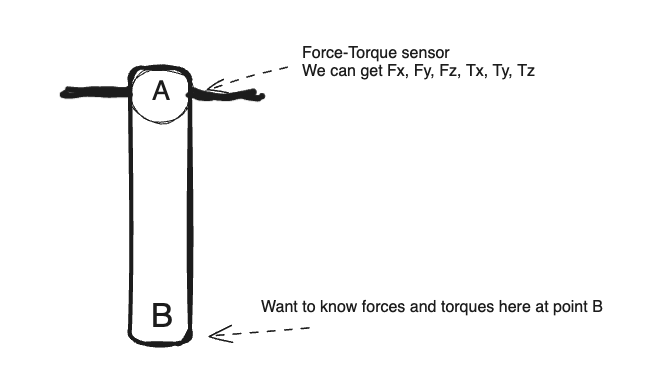Suppose we have a rigid body with known length $r$ that is fixed at point $A$.
We also have a force-torque sensor at point $A$.
The body is fixed such that it doesn't move.
We apply forces to point $B$ and get the values from sensor at point $A$.
How can we translate the f-t values at $A$ to f-t values at $B$?

UPD:
Decided to write balancing equations to make it a bit more clear:

The rigid body is in the equilibrium and we press with some force $F_b$ at point $B$. We can see the values of the f-t sensor at $A$.
Thus:
There is one balancing force at $A$: $F_a$, and one balancing torque, which will be something like $F_{a_{t}}$ $\times$$d$ (depending on the design of the f-t sensor).
$$F_b = -F_a.$$
If $F_a = (0, value, 0)$ then opposing force $F_b$ will be equal to $(0, -value, 0).$
And if we can get values from the force-torque sensor at $B$, then we know the value of $F_a$ at $A$, which is equal to $(0, -F_y, 0)$.
Does this look correct?

